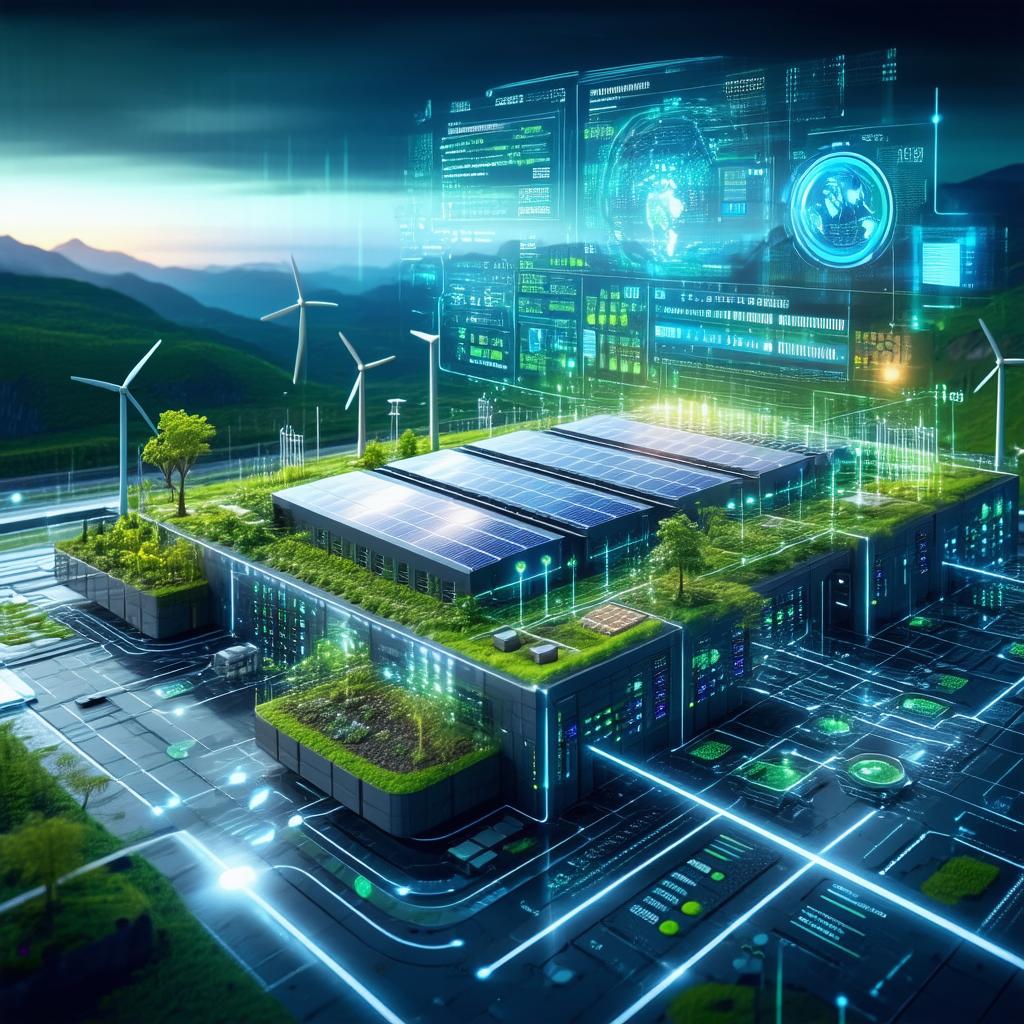Introduction
Sustainable AI in 2025 is becoming a crucial topic as industries worldwide embrace artificial intelligence. While AI is driving innovation—helping clean our oceans and assisting doctors in early cancer detection—there is growing concern about its environmental impact. As AI adoption accelerates, businesses must balance technological advancements with sustainable practices to minimize energy consumption and e-waste.
This blog explores why sustainability is crucial for AI development, the environmental challenges associated with AI, and how businesses can adopt sustainable AI frameworks to balance innovation with eco-consciousness.
The Growing Importance of Sustainable AI

AI is no longer a futuristic concept; it is a mainstream technology impacting every sector. However, with great power comes great responsibility. The rise in AI-powered applications has led to increased energy consumption, e-waste, and carbon emissions, raising concerns about its long-term environmental impact.
According to the United Nations Environment Programme (UNEP), the rapid advancement of AI and related technologies is contributing to rising levels of electronic waste (e-waste) and increased energy consumption in data centers. Businesses that fail to incorporate sustainability into their AI operations risk non-compliance with environmental regulations and may suffer reputational damage.
Environmental Challenges Posed by AI
The environmental impact of AI is a growing concern due to its reliance on high-powered computational resources. Here are the primary challenges businesses need to address:
1. High Energy Consumption
AI systems, especially those utilizing deep learning models, require vast amounts of computational power. Training large AI models demands multiple GPUs or TPUs, consuming significant electricity. This raises concerns about sustainability, particularly in regions where energy sources are not predominantly renewable.
2. Data Centers and Carbon Emissions
Data centers are essential for AI operations, but they also contribute to global carbon emissions. Cooling systems, servers, and storage units consume substantial energy, increasing the carbon footprint of businesses relying on AI-driven solutions.
3. E-Waste and Hardware Lifecycle Management
As businesses adopt AI-driven solutions, they frequently upgrade hardware, leading to growing levels of e-waste. The improper disposal of outdated AI infrastructure can have severe environmental consequences, making sustainable e-waste management a priority.
4. Compliance with Environmental Regulations
Governments and global organizations are implementing stricter environmental policies, such as the European Union’s Circular Economy Action Plan (CEAP). Businesses that fail to comply with sustainability regulations may face legal consequences and financial penalties.
Building a Sustainable AI Framework
To ensure AI advancements do not come at the expense of the environment, businesses must develop and implement a sustainable AI framework. Here are key strategies for achieving sustainability in AI:
1. Energy-Efficient AI Computing
Organizations must invest in energy-efficient AI computing solutions to minimize power consumption. For instance, technology companies like ASUS, in collaboration with Intel, are developing servers that prioritize energy efficiency while maintaining high processing capabilities.
2. Cloud-Based and Edge Computing Solutions
Cloud computing and edge computing offer alternative ways to process AI models efficiently. Cloud-based AI solutions optimize resource usage and reduce the need for extensive on-premises hardware, thus decreasing energy consumption.
3. E-Waste Reduction and Responsible Recycling
Businesses should implement e-waste reduction strategies, such as refurbishing old hardware, promoting device longevity, and utilizing global take-back services for proper disposal and recycling.
4. AI-Driven Resource Optimization
AI can be leveraged to enhance sustainability within AI systems. By using AI-powered energy management solutions, businesses can optimize their energy consumption and reduce operational inefficiencies.
5. Regulatory Compliance and Corporate Responsibility
Companies must stay ahead of evolving environmental regulations and proactively integrate sustainability into their AI strategies. Transparency in AI sustainability efforts will strengthen brand reputation and increase consumer trust.
The Role of AI in Achieving Sustainability Goals
While AI contributes to environmental concerns, it can also be a key driver in achieving sustainability objectives. Here’s how AI can be leveraged for environmental conservation:
1. Smart Energy Management
AI-powered energy management systems help optimize power usage in industries, reducing carbon emissions and lowering costs.
2. Climate Change Monitoring
AI-driven climate models can analyze vast amounts of environmental data to predict weather patterns, track deforestation, and monitor ocean pollution, aiding conservation efforts.
3. Sustainable Supply Chains
AI enhances supply chain sustainability by optimizing logistics, reducing waste, and ensuring responsible sourcing of raw materials.
4. Waste Reduction and Recycling
AI can improve waste management by identifying recyclable materials and automating sorting processes to enhance recycling efficiency.
Future Outlook: The Shift Towards Sustainable AI
As AI continues to advance, businesses will need to strike a balance between innovation and sustainability. Organizations that prioritize sustainability in AI will gain a competitive edge by meeting regulatory requirements, reducing costs, and fostering long-term business growth.
IDC predicts that more enterprises will adopt Sustainable AI Frameworks focusing on energy efficiency, resource optimization, and e-waste reduction. Companies leading the charge in sustainable AI adoption will set the benchmark for responsible and ethical AI development.
Conclusion
Sustainability is no longer an option but a necessity for AI advancement in 2025. As businesses continue to invest in AI-powered solutions, integrating sustainability practices will ensure long-term success and positive environmental impact.
By focusing on energy-efficient computing, responsible e-waste management, and AI-driven sustainability initiatives, companies can lead the way in ethical AI development while minimizing environmental harm.
Courtesy: Internet
Related Article:
Anima Anandkumar Highlights AI’s Potential to Solve ‘Hard Scientific Challenges’









+ There are no comments
Add yours